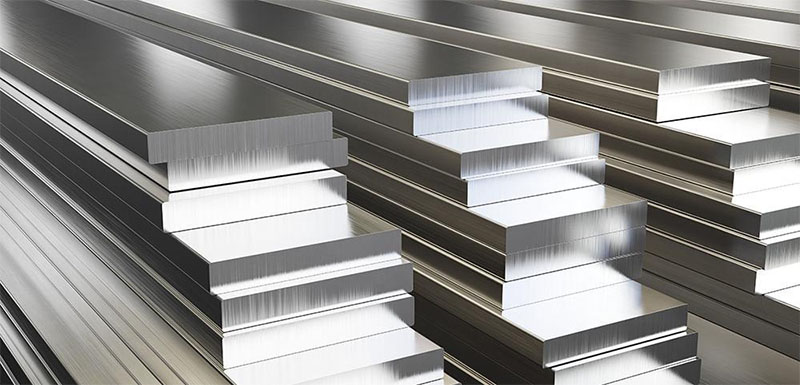Today, we'll be looking at the properties that make each material unique: strength, ductility, hardness, aesthetics, and cost. But first, let’s discover the main differences between mild steel and stainless steel.
Before we compare the differences between mild steel and stainless steel, let's first understand what we classify as mild steel. Mild steel is a type of carbon steel that has a small amount of carbon in it. It’s sometimes referred to as low carbon steel and contains about 0.05% to 0.25% carbon.
This steel isn't an alloy steel, so you won't find many other elements in its composition either. The beauty of mild steel is that it's very ductile, but it does mean that hardening the steel can be a challenge.
Common applications for mild steel include signs, structural steel, furniture, cars, and fencing. You'll find it used in a variety of projects thanks to the many benefits it offers.
Stainless steel is a type of steel that is very resistant to rust and corrosion. In order to be classified as stainless steel, the steel must contain less than 1.2% carbon and at least 10.5% chromium. Certain types of stainless steel have other elements added to them, including titanium and nickel, which help to enhance its properties.
Since stainless steel is resistant to corrosion, it is an ideal steel to help transport chemicals, food, and liquids. It is also a very low-maintenance type of metal, making it easy to clean and preserve. Today, many household appliances are made from this type of steel, thanks to the many benefits it offers homeowners.

Stainless steel does not offer as much of a change due to its inability to be as ductile as mild steel. This is attributed to stainless steel being a harder material that is often better suited for certain construction projects.
That said, stainless steel is more corrosion-resistant than mild steel due to its surface coating. It is also very heat-resistant, which is why it is a good choice for carrying chemicals and household appliances.
When you look at the two materials at a molecular level, the difference is simple. The main difference is that stainless steel is made from very little carbon, and is instead alloyed with nickel, chromium, and other elements that provide its chemical properties. This, in turn, makes stainless steel very impact-resistant, as the chromium alloy protects the material.
Mild steel itself is primarily composed of carbon, and can be reinforced with additional carbon or galvanized with zinc. Without the galvanizing process, mild steel itself is very ductile and easily damaged. This is why it is used in projects that require greater precision, as it can be easily shaped to suit your needs.

One of the easiest ways to tell if a metal is stainless steel is to simply look at its surface. Stainless steel, known for its smooth and polished surface, differs from carbon steel in the chromium content. Carbon steel rusts when exposed to air and moisture. This iron oxide film is active and accelerates corrosion by forming more iron oxide. Stainless steel contains enough chromium that a passive chromium oxide film forms, preventing further corrosion.
While steel prices change daily, some things remain constant: stainless steel is always more expensive than mild steel. This is due to a range of factors including supply, demand, and energy prices. Depending on the scope of your work, if you can get away with stainless steel, it will be better for your wallet. However, the durability and attractive appearance of stainless steel make it a material that most people ignore the cost of.
Now that you know the differences between stainless steel and mild steel, is one better than the other? The short answer is no. It all depends on the project you have coming up and what you need to get done. If the surface of your next project is critical, stainless steel is your best choice. However, if you need large volumes for structural purposes and the material will not be visible, mild steel will be the most cost-effective choice.
Whichever you choose, you will have an excellent material as the foundation of any project, and HSJ can provide you with many advantages over other steel products. Happy building!